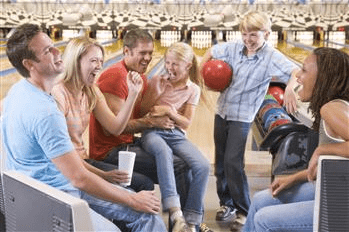Bowling in the U.S. has undergone a lot of changes in the last few decades, and bowling alley business plans have had to change as a result. In this post, we’ll look at where bowling is still popular, where its popularity is lagging, and what bowling alley owners are doing to adapt to the modern bowling environment.
A Midwestern Sport … Mostly
While bowling alleys can be found all across the country and the world, bowling remains most popular in the U.S. in the upper Midwest, specifically the Great Lakes region. While there are also heavy clusters of bowling activity on the East Coast, specifically in New York, New Jersey, Maryland, and Massachusetts, the greatest concentration of bowling in the U.S. is in the Rust Belt, including Illinois, Michigan, Wisconsin, and Ohio.
Outside of those areas, Southern California is home to a large number of bowling alleys, specifically in Los Angeles and Orange Counties.
Who Is Bowling?
According to industry studies, most bowling alley customers come from two different socioeconomic groups: 25-34 year olds, and 35-44 year olds. Outside of those two groups, interest in bowling is more prominent among younger demographics, including 18-24 year old and 12-17 year olds. Of the older demographics, 55-64 year olds make up only about 5% of bowlers; the age groups older than that are even lower.
In addition to age, studies also show that bowling is more popular with people of certain socioeconomic statuses. As of 2011, the vast majority of bowlers were high-income earners; the largest socioeconomic group to enjoy bowling were those making over $100K a year, followed by those in the $50K-$74.9K, $75K-$99.9K, and $35-$49.9K wage ranges, respectively. In economic groups lower than that, interest in bowling is much lower.
The Future of America’s Bowling Alleys
Overall, the popularity of bowling in the U.S. has severely declined over the last few decades, and the number of bowling alleys has shrunk accordingly. But this has not mean the end of America’s bowling alleys. Instead, it has lead to changes in the traditional way bowling alleys have been run, and in who they target. These innovations include:
- Upscaling – because high wage earners are now more likely to be bowlers, many bowling alleys have responded by upgrading their facilities to meet the needs of a more upscale clientele. The traditional bowling alley is usually seen as a blue collar, family environment, an image that demographic-savvy bowling alley proprietors have been working against in order to attract clients of higher socioeconomic status. These efforts have included upgrading the food and beverage service of their establishments. Upscale bowling alleys have made an effort to make their bar and restaurant areas stand out on their own, and attract customers who may not be interested in bowling but who are looking for a quality restaurant or bar experience.
- Targeting casual bowlers – another method that bowling alleys are using to adapt is to specifically target casual bowlers, and to make their establishments inviting to casual players. In the past, many bowling alleys catered to regulars and league players. Today, bowling leagues are not nearly as popular, and many bowling alleys that once catered to them are instead focusing on attracting less devoted and experienced customers who are looking for a casual experience. One of the main ways they are doing this is through hybridization – incorporating other activities, like game rooms, go-karts, and laser tag into their facilities, in order to attract customers who may not be primarily interested in bowling, or who enjoy the variety of activities instead of focusing on just one.
Interested in learning more about modern bowling alleys? Contact us today at 310-532-6091.
Sources


